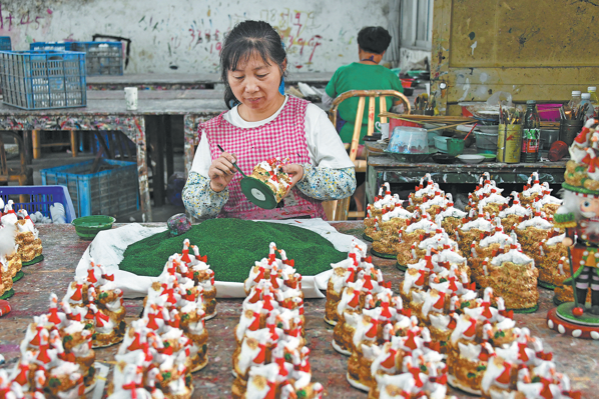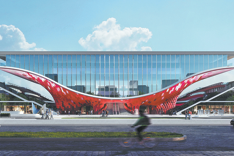What's on

Calligraphy artists

Yu Youren and Gao Ershi are prominent intellectuals and calligraphers from 20th-century China, known for their accomplishments in the caoshu running script. Despite an age gap of more than 20 years, the two were friends, and often composed poems together. High Aspirations, an exhibition at the National Art Museum of China, until Jan 3, is now showing some 20 pieces of their calligraphy works. The museum's director Wu Weishan says the show "invites discussion about core values of calligraphy, as well as its role in conveying the aesthetic spirit of Chinese culture".
9 am-5 pm, closed on Mondays.1 Wusi Dajie, Dongcheng district, Beijing. 010-6400-1476.
Southeast Asian art

Falling, an ongoing exhibition at Tang Contemporary Art's space in Beijing, unfolds a view of the breadth and depth of artistic creation in Southeast Asia. The show, running until Jan 15, brings together more than 20 artists from different Southeast Asian countries who have garnered international recognition over the past two decades, and whose 50 works on display provide rich perspectives on the diversity of the region's social and cultural landscapes.
798 art zone, 2 Jiuxianqiao Road, Chaoyang district, Beijing.010-5762-3060.
Woodcut legend

Huang Yongyu, 98, is a Chinese art legend. He paints and draws, and publishes poems, essays and novels. His experiences of traveling, living and working across the country in his earlier years, and later abroad, have rendered his work with wit and a sense of humor. Forceful Cuts at the China Art Museum in Shanghai zooms in on Huang's woodcut prints, his most exhibited work genre. On show are around 200 works spanning his career of eight decades. Huang has said woodcut art is laborious but he enjoys it. Since the age of 16, he has produced woodcuts and always carried the needed equipments with him, be it during wartime or traveling around. Works on show include his best-known Ashima series, drawn from a long narrative poem of the Sani people, a branch of the Yi ethnic group, in Yunnan province. Huang says, "I live every day in the same way as I work on every plank of wood, paying great attention to spaces between the cuts and fear making mistakes."
10 am-6 pm, Tuesday to Sunday. 205 Shangnan Lu, Pudong district, Shanghai. 400-921-9021.
Interior designs

Zuowang, literally "sitting and forgetting", refers to a classical Taoist meditation method in which one sits quietly, forgets about worldly affairs and connections, and enters a spiritual state of aloofness. The term is further enriched to express an ideal lifestyle in which one is surrounded by nature, integrating daily life with nature, through which one ascends to a state of the unity of the physical and spiritual beings. Sit, Forget is a related long-term interior design exhibition that is going on at Guihai Qinglan, a space for art and culture, seated between the picturesque hills and waters of Guilin, Guangxi Zhuang autonomous region. It is showing the works of three Chinese designers. Wang Sha, founder of Yi Wen Li, the cultural institution that is presenting the exhibition, says, "the ultimate pursuit of the Chinese is to sense the elements of nature, in mountains and waters, in daily routines". Exhibits are home designs that introduce the beauty of nature into the physical space of people's daily lives by which they can achieve mental well-being.
22 Hangtian Road, Qixing district, Guilin, Guangxi Zhuang autonomous region.
Today's Top News
- US actions fail to match its words on Taiwan question
- China's diplomacy to blaze new trails
- Visits point way to better future for all
- PLA tests joint combat strength for second day
- Xi stresses advancing rural areas' vitalization
- US arms sale to Taiwan will lead secessionists toward destruction






























